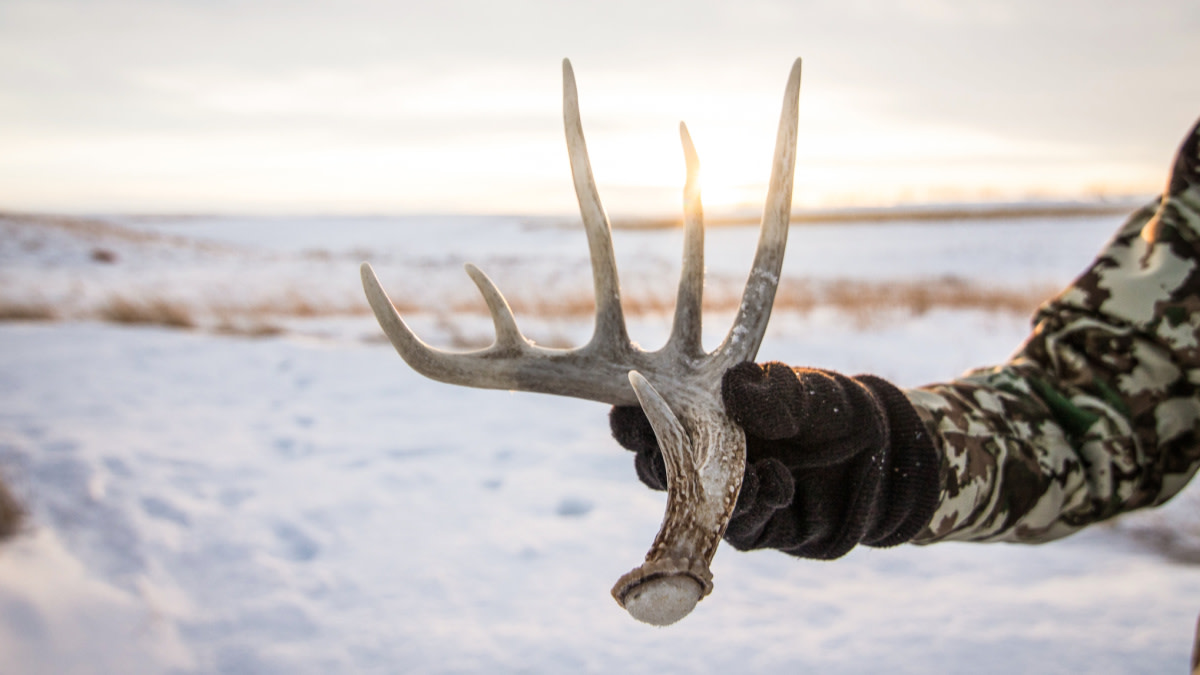
I grabbed a shed antler from my coffee table this morning and watched as my black Lab’s tail began to wag. His hopeful eyes asked the same question that all whitetail hunters are wondering right now: Is it time to start shed hunting?
Shed antlers are a hot commodity in the outdoor world and competition for them is getting fiercer every year. If you’re looking to be as successful as possible, you don’t want to start searching for antlers too early, but you certainly don’t want to be the last one to the party. Here’s how to know when it’s time to hit the woods.
If You Shed Hunt Too Early
The more frequently you walk through an area, the more likely you are to stress local wildlife. If you’re shed hunting in an area where deer or elk struggle through tough winters, your presence could be detrimental to their survival. For this reason, an increasing number of Western states have put shed hunting seasons in place, delaying pressure until most of winter has passed. Antler collectors in the Northeast or Upper Great Lakes might consider a self-imposed shed hunting delay for these same reasons.
Early shed hunting, by way of increased human pressure, can also push bucks out of your area before they’ve even dropped their antlers. If you’re hiking around looking for antlers that are still on top of a deer’s head, you’re wasting your time and reducing the chances of those antlers ever ending up in an area you can search. In an ideal situation, you want bucks feeling comfortable and spending large amounts of time on your property. Only after the majority have dropped their antlers do you want to risk heading in to search.
Snow is another factor to keep in mind when planning your shed hunts. It goes without saying that shed hunting in snowy conditions is more difficult and usually a waste of time.
If You Shed Hunt Too Late
If you wait too long to shed hunt, especially in areas with high squirrel and rodent populations, you risk significant damage being done to fallen antlers. The longer an antler sits on the ground, the more likely another animal will come along and chew on it.
Human competition for shed antlers is increasing every year. If you’re shed hunting shared ground or public lands and you show up late, there might not be any antlers left to find at all.
Perfect Timing
Keeping those issues in mind, it’s important to keep track of several different factors to ensure your timing is just right.
The most obvious of these is the actual calendar date. The shedding of antlers is primarily driven by dropping testosterone levels tied to changes in daylight. Since the change in photoperiod over the course of winter happens at a predictable rate, the timing of antler drop is relatively consistent. For the Midwest, the peak of whitetail antler drop tends to occur from early February through early March.
It’s also important to consider how localized factors might shift the timing of antler drop earlier or later. Variables such as the severity of winter weather, available nutrition, or health of individual bucks can all slide the timing of antler drop one way or the other.
The best way to keep tabs on these regional peculiarities is to monitor the local deer herd with trail cameras. I like to check my cameras, placed on the best winter food sources available, on a weekly basis. When I see that more than 50% of the bucks have shed, I know it’s close to go-time.
On most years, between February 15 and March 15 is the best time to start shed hunting. I’d then recommend adjusting your starting point in either direction based on the severity of the winter, available nutrition, and results of your trail camera surveys.
As soon as the snow melts in that window, plan on being in the woods and walking. White gold is waiting.
Feature image via Captured Creative.




